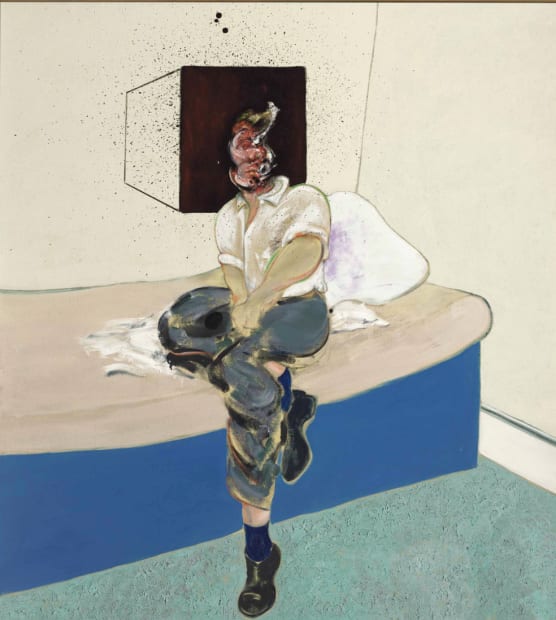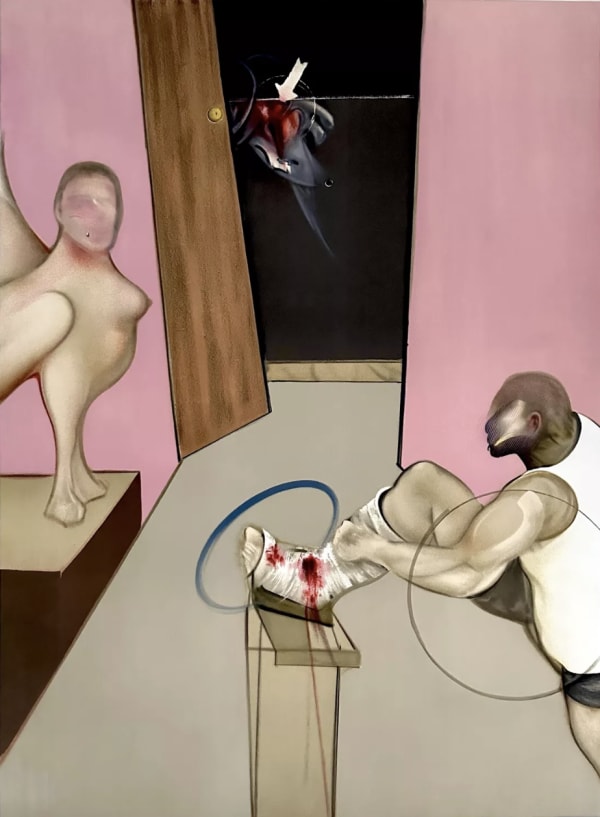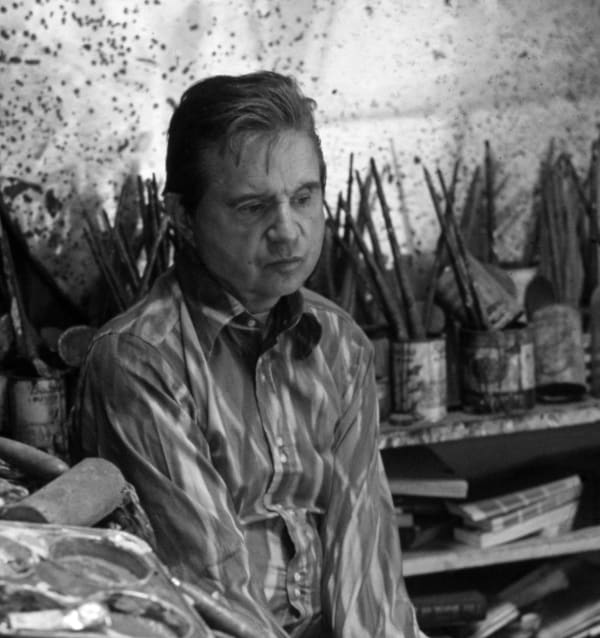-

Study for Self-Portrait, 1964
Oil on canvas, 152.4 x 140 cm
©The Estate of Francis Bacon, image repoduced for educational purposes only.
-
“I think of life as meaningless, but we give it meaning while we exist.”
– Francis Bacon
Death was never a distant idea for Bacon; it was the pulse beneath almost everything he painted. He saw it not as an endpoint but as the ultimate truth of existence, the shadow that gives life its intensity. In his work, death isn’t sentimental or tragic but physical, inevitable, sometimes even absurd. Figures dissolve, flesh mutates, time collapses; everything is caught in motion toward disappearance.



